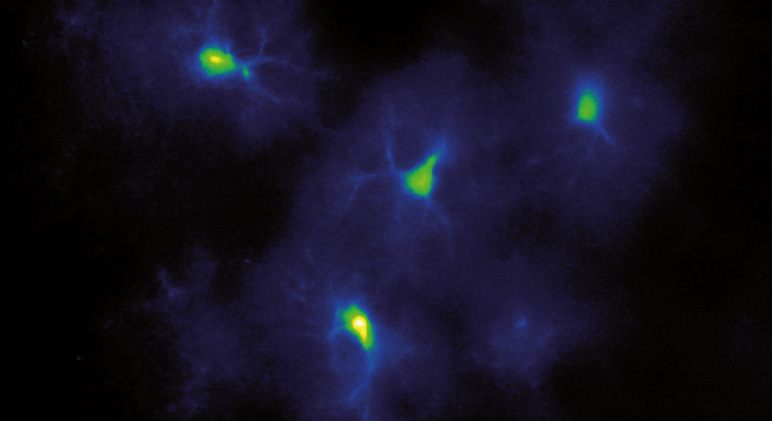Paper details
Major depressive disorder (MDD) is a severe and debilitating mental illness with a very large socioeconomic impact worldwide (1). The neurobiology of this disease has been studied for a long time, focused on neuronal alterations; however, the underlying etiology is not yet fully understood. Astrocytes, a glial cell type, have been shown to play relevant roles in synaptic transmission and plasticity, with significant impact on behavioral responses (2).

Evidence collected during the past two decades have shown that astrocytes might contribute to the pathophysiology and pathogenesis of MDD (3). Therefore, we aim to investigate the role of astrocyte-neuron signaling in this mental disease. Here, we used a corticosterone treatment approach as depressive-like mouse model to evaluate the role of astrocyte-neuron signaling in layer 2/3 of medial prefrontal cortex (mPFC) from naïve and MDD mice. Electrophysiology, Ca2+ imaging techniques and behavioral test has been performed.
Results:
1. Spontaneous and serotonin-evoked astrocyte calcium oscillations dynamics were altered in MDD mice.
2. Local application of serotonin promotes a transient synaptic depression of the excitatory postsynaptic currents (EPSCs) in pyramidal neurons from naïve mice, while in MDD mice induced a persistent depression.
3. After blockage of astrocytic calcium oscillations by intracellular BAPTA, a prominent depression of EPSCs was observed. Similar data was found in the Ip3r2-/- mice, where astrocyte calcium is impaired.
4. Chemogenetic activation of astrocytes by Gq-DREADDs in mPFC could reverse the behavioral and electrophysiological changes found in MDD mice.
Although additional experiments are required, these results reveal the potential impact of astrocyte signaling in the pathophysiology of MDD. These data highlights the relevance of astrocytes as fundamental players in the serotonergic system dysfunctions.
References:
1 Artigas F, Bortolozzi A. Therapeutic Potential of Conjugated siRNAs for the Treatment of Major Depressive Disorder. Neuropsychopharmacology. 2017; 42(1): 371. doi: 10.1038/npp.2016.182.2 Mederos S, Gónzalez-Arias C, Perea G. Astrocyte-Neuron Networks: A Multilane Highway of Signaling for Homeostatic Brain Function. Frontiers in Synaptic Neuroscience. 2018; 10:45. doi: 10.3389/fnsyn.2018.00045.
3 Cao X, Li LP, Wang Q, Wu Q, Hu HH, Zhang M, Fang YY, Zhang J, Li SJ, Xiong WC, Yan HC, Gao YB, Liu JH, Li XW, Sun LR, Zeng YN, Zhu XH, Gao TM. Astrocyte-derived ATP modulates depressive-like behaviors. Nat Med. 2013 Jun; 19 (6): 773-7. doi: 10.1038/nm.3162.


